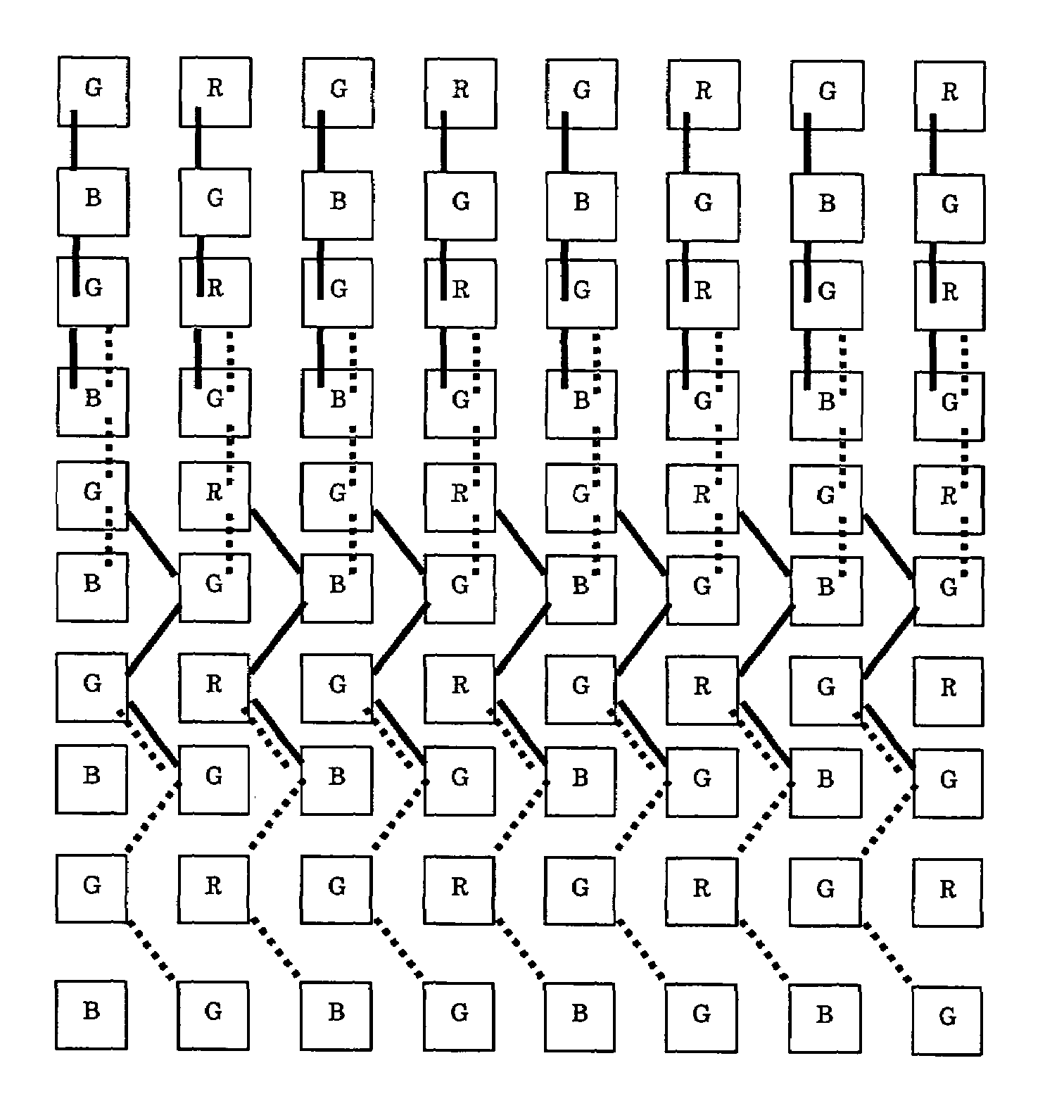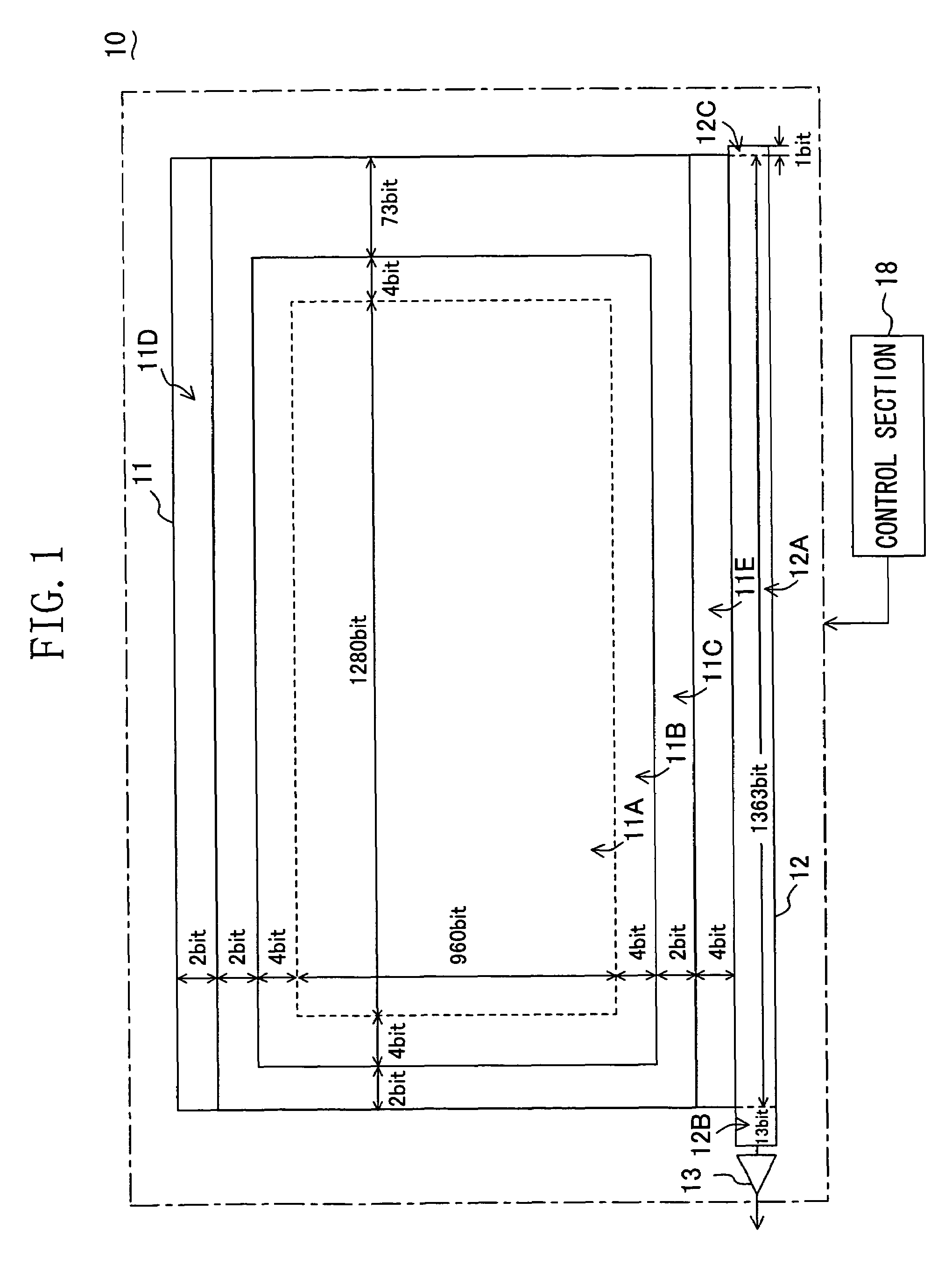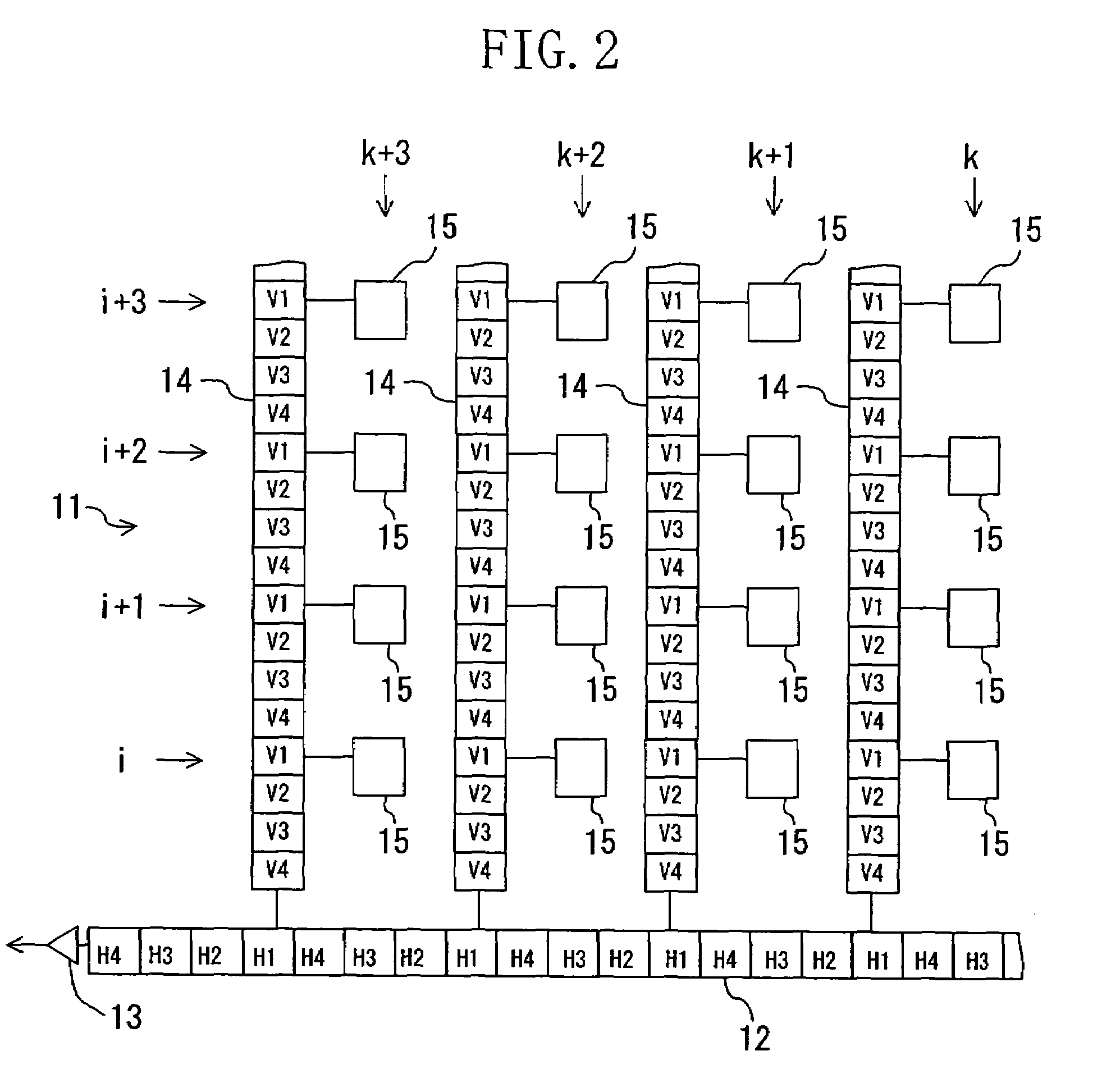Solid-state image pickup device, drive method therefor and camera
a solid-state image and pickup device technology, applied in the direction of solid-state device signal generators, picture signal generators, television systems, etc., can solve the problems of sacrificing sensitivity, affecting the resolution, and long transfer processing time, so as to achieve the effect of reducing resolution and sacrificing sensitivity
- Summary
- Abstract
- Description
- Claims
- Application Information
AI Technical Summary
Benefits of technology
Problems solved by technology
Method used
Image
Examples
embodiment 1
[0131]In Embodiment 1, a progressive scan CCD sensor will be described as a solid-state image pickup device.
[0132]FIG. 1 is an illustration showing a configuration of a CCD sensor 10 of Embodiment 1 of the present invention. The CCD sensor 10 of FIG. 1 includes a pixel section 11, a horizontal transfer section 12, a charge detection section 13, vertical transfer sections (not shown in FIG. 1) and a control section 18. The CCD sensor 10 adopts an all pixel simultaneous independent readout scheme.
[0133]The pixel section 11 includes an effective pixel region 11A, a transient region 11B, an optical black region 11C and vertical dummy regions 11D and 11E. The effective pixel region 11A has photodiodes as optoelectronic transducers arranged in an array of 1280 (horizontal)×960 (vertical). One photodiode constitutes one pixel. Hereinafter, a horizontal line of pixels refers to a row, and a vertical line of pixels refers to a column.
[0134]The transient region 11B, which surrounds the effect...
embodiment 2
[0194]In Embodiment 2, an interlaced scan CCD sensor will be described as a solid-state image pickup device.
[0195]FIG. 17 is an illustration showing a configuration of a CCD sensor 30 of Embodiment 2 of the present invention. The CCD sensor 30 of FIG. 17 includes a pixel section 31, a horizontal transfer section 32, a charge detection section 33, vertical transfer sections (not shown in FIG. 17) and a control section 38.
[0196]The pixel section 31 includes an effective pixel region 31A, a transient region 31B, an optical black region 31C and vertical dummy regions 31D and 31E. The effective pixel region 31A has photodiodes as optoelectronic transducers arranged in an array of 1280 (horizontal)×960 (vertical). One photodiode constitutes one pixel. The regions 31A to 31E of the pixel section 31 are substantially the same in arrangement and the number of pixels as the regions 11A to 11E of the pixel section 11 of the CCD sensor 10 of FIG. 1, respectively. The transient region 31B and th...
embodiment 3
[0235]In Embodiment 3, a metal oxide semiconductor (MOS) sensor, in particular, a complementary MOS (CMOS) sensor will be described as a solid-state image pickup device.
[0236]FIG. 27 is a block diagram of a configuration of a CMOS sensor 50 of Embodiment 3 of the present invention. The CMOS sensor 50 of FIG. 27 includes a pixel address designation circuit 312, a control section 314, a sync generator 316, a timing generator 318, a vertical register (row address selection section) 322, a latch array 324, a horizontal register (column address selection section) 326, a sense amplifier 328 and a pixel section 340.
[0237]The pixel section 340 includes an effective pixel region 344, an optical black region 346 and an idle region 348. The effective pixel region 344 has photodiodes as optoelectronic transducers arranged in an array of 1280 (horizontal)×960 (vertical). One diode constitutes one pixel.
[0238]FIG. 28 is a circuit diagram showing part of the pixel section 340 in FIG. 27. Referring...
PUM
 Login to View More
Login to View More Abstract
Description
Claims
Application Information
 Login to View More
Login to View More - R&D
- Intellectual Property
- Life Sciences
- Materials
- Tech Scout
- Unparalleled Data Quality
- Higher Quality Content
- 60% Fewer Hallucinations
Browse by: Latest US Patents, China's latest patents, Technical Efficacy Thesaurus, Application Domain, Technology Topic, Popular Technical Reports.
© 2025 PatSnap. All rights reserved.Legal|Privacy policy|Modern Slavery Act Transparency Statement|Sitemap|About US| Contact US: help@patsnap.com



